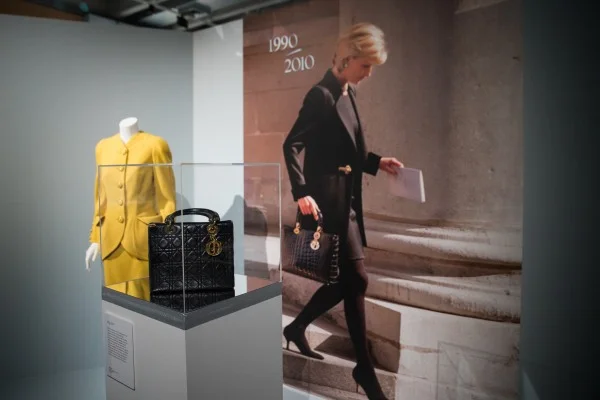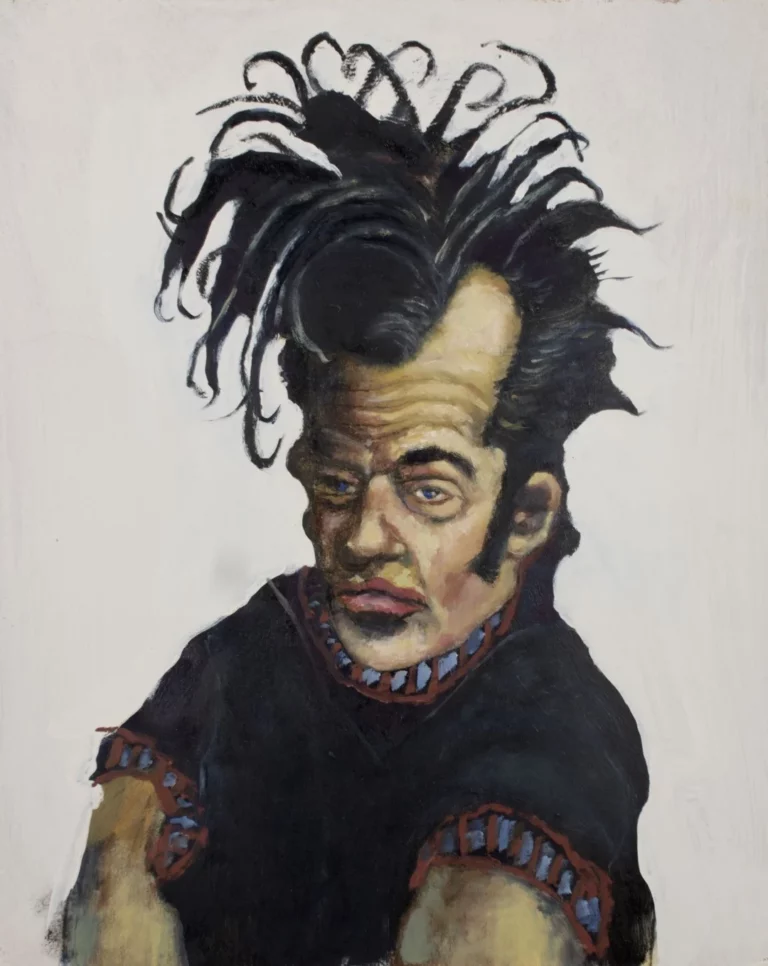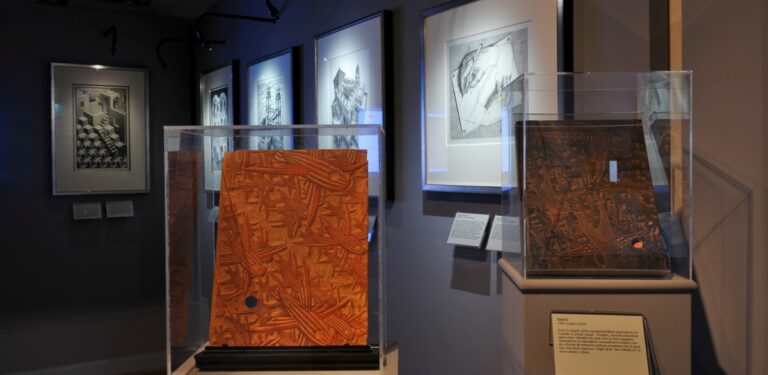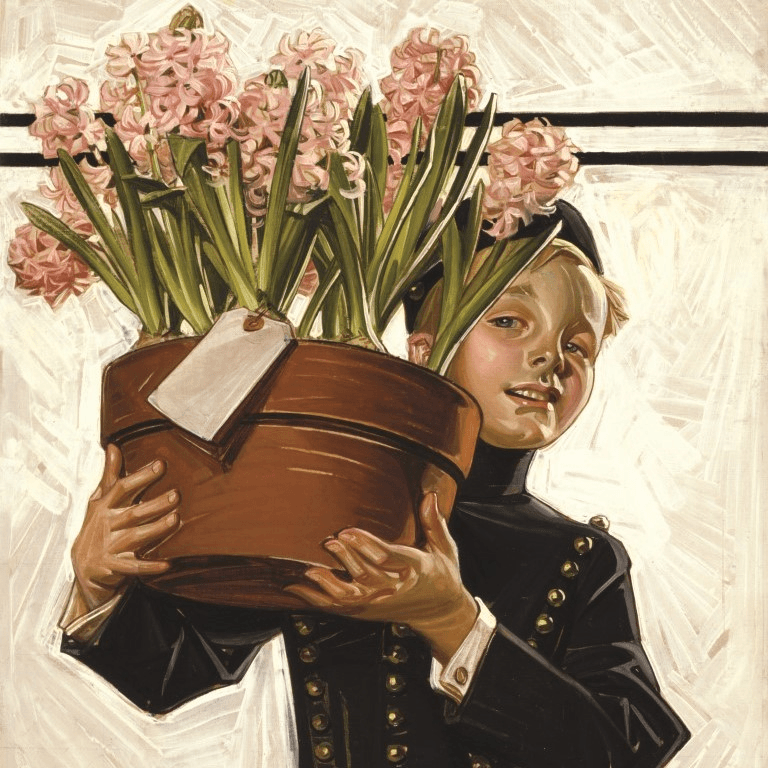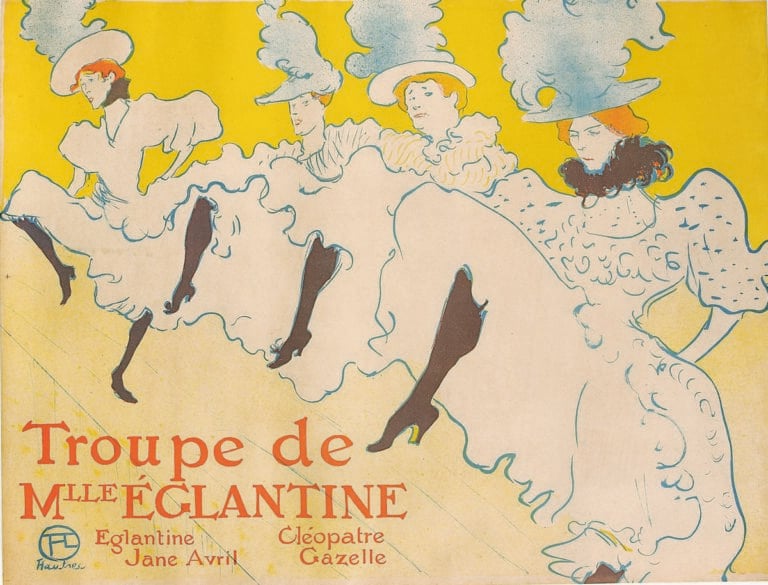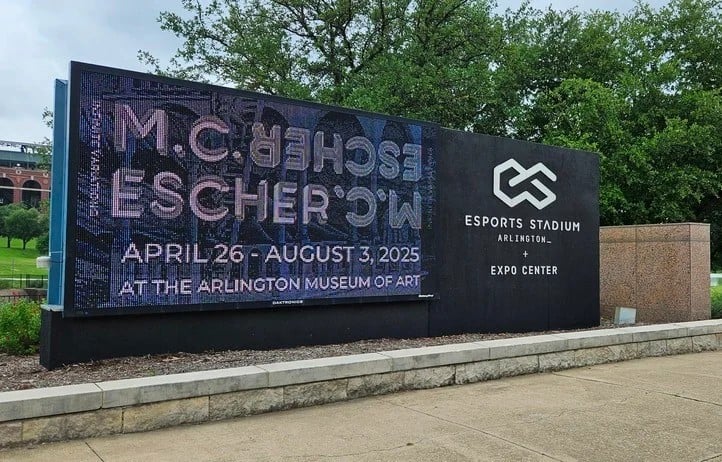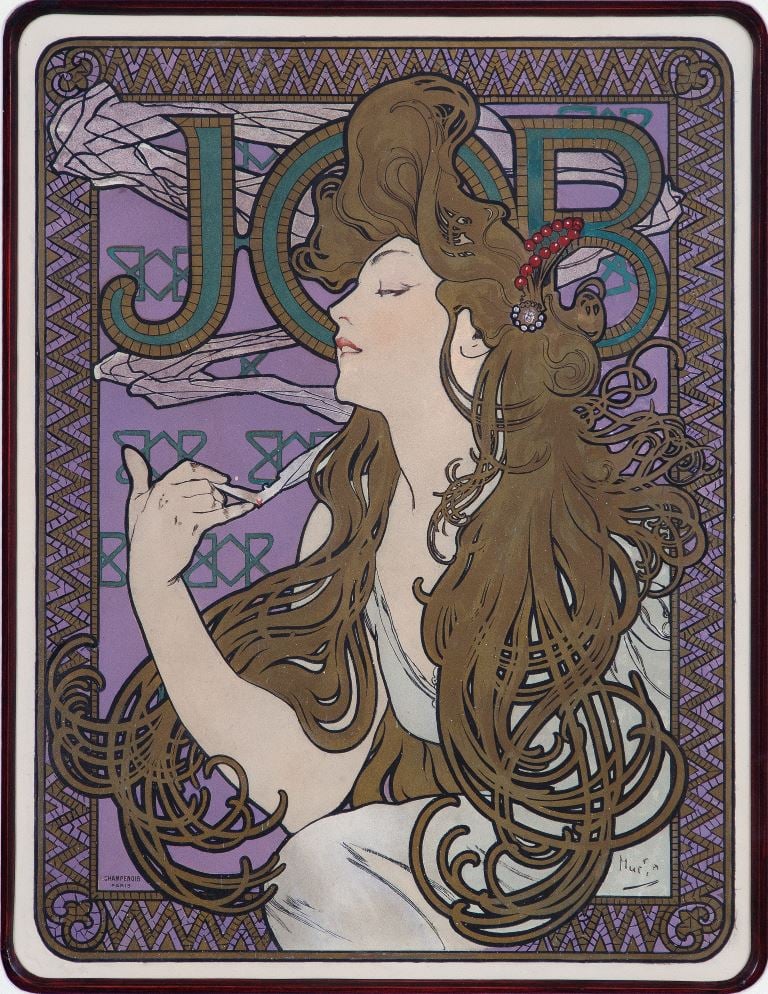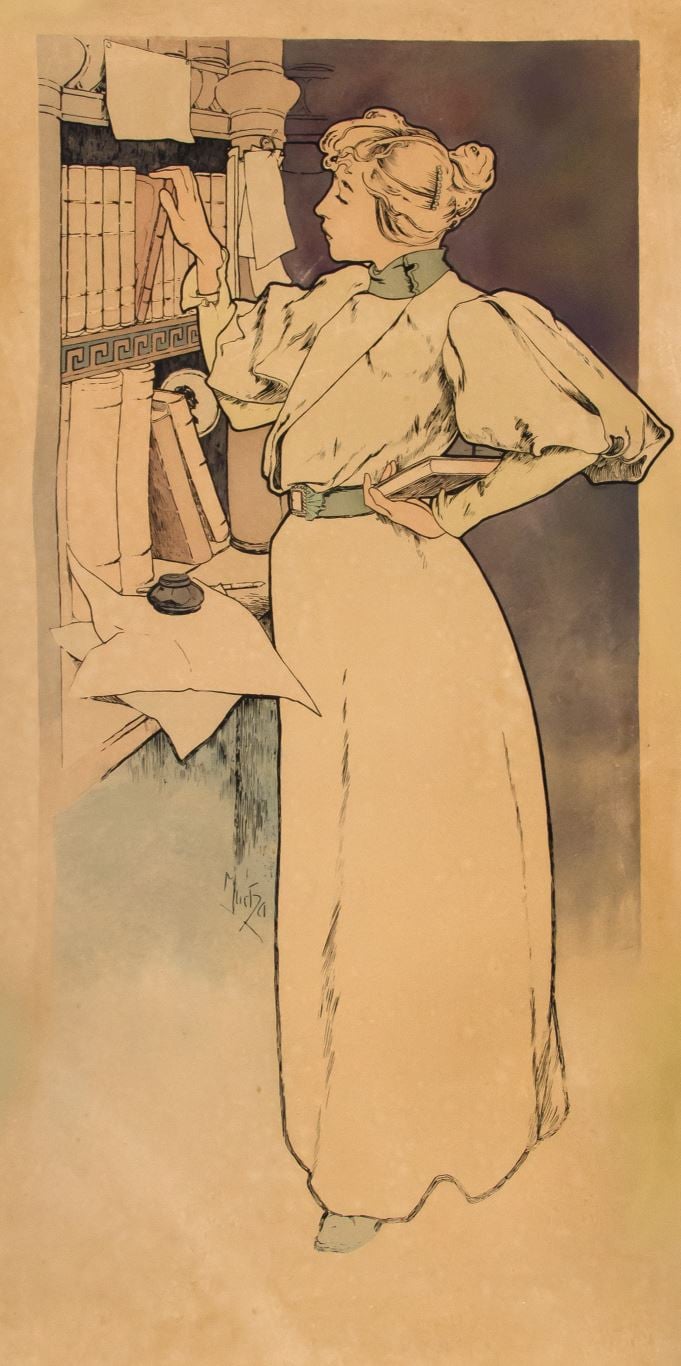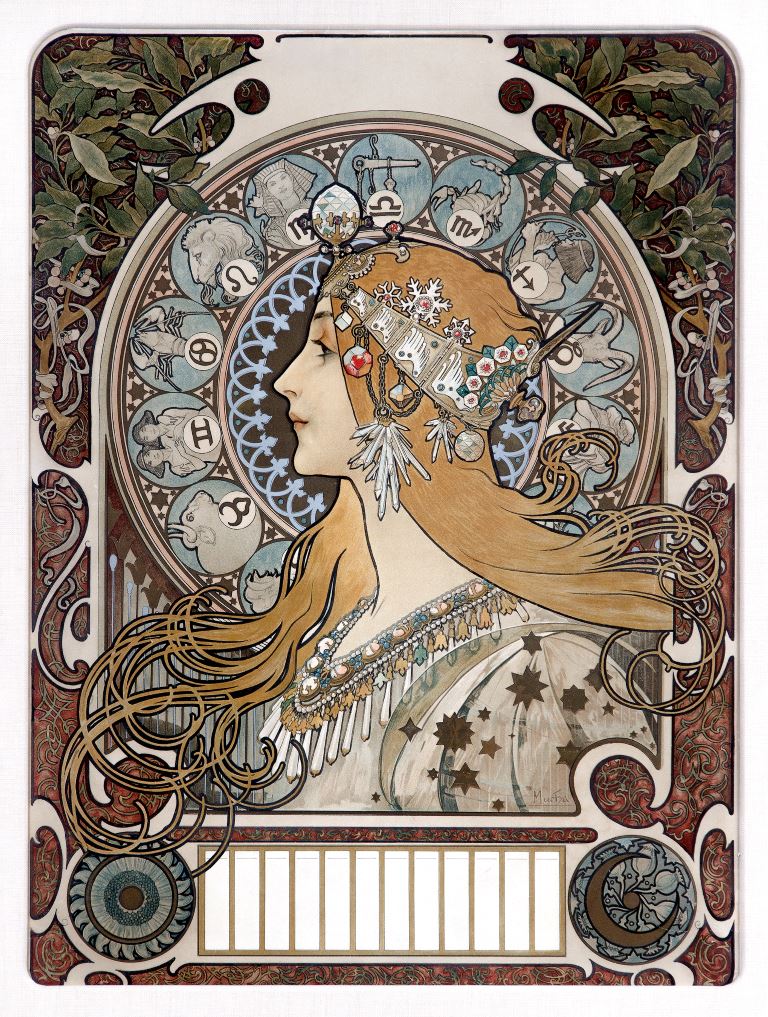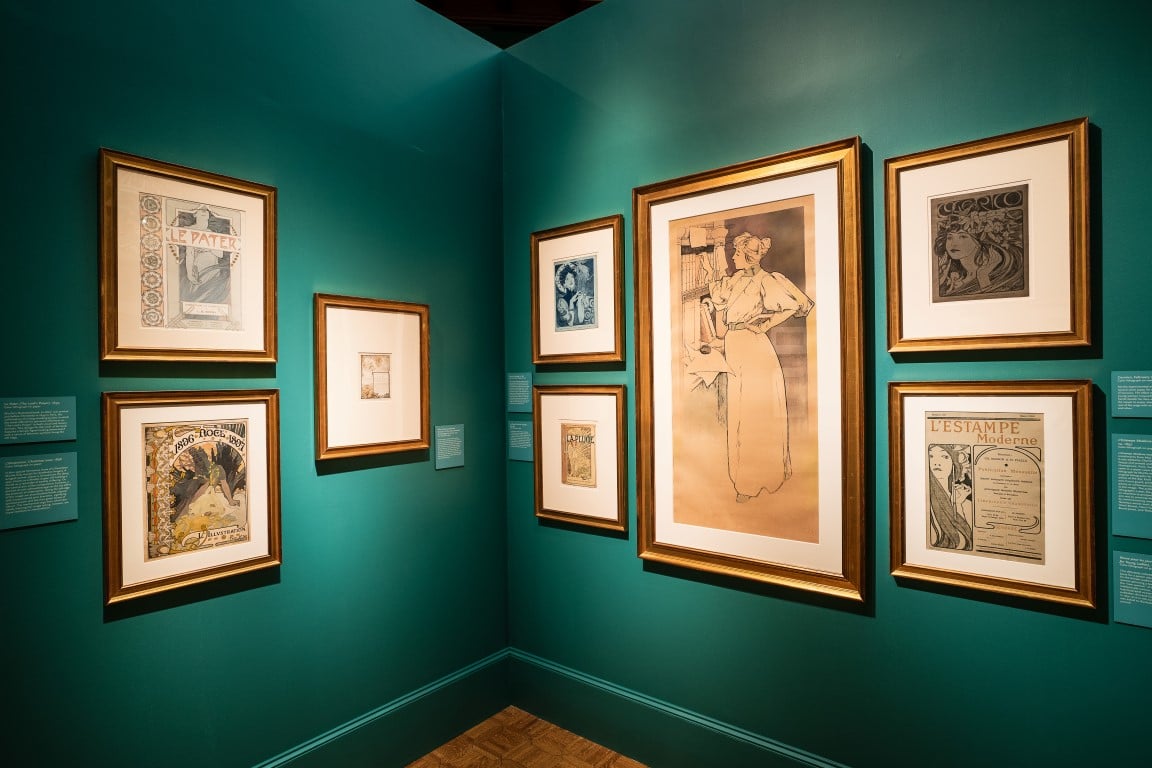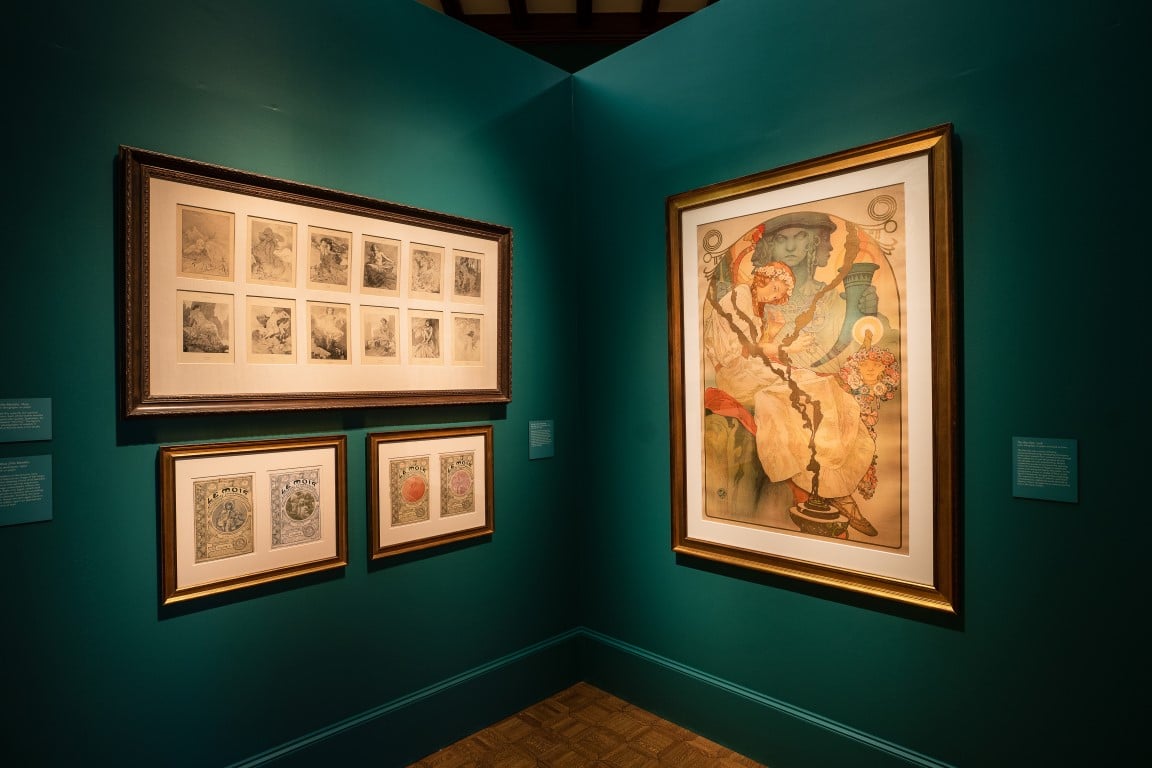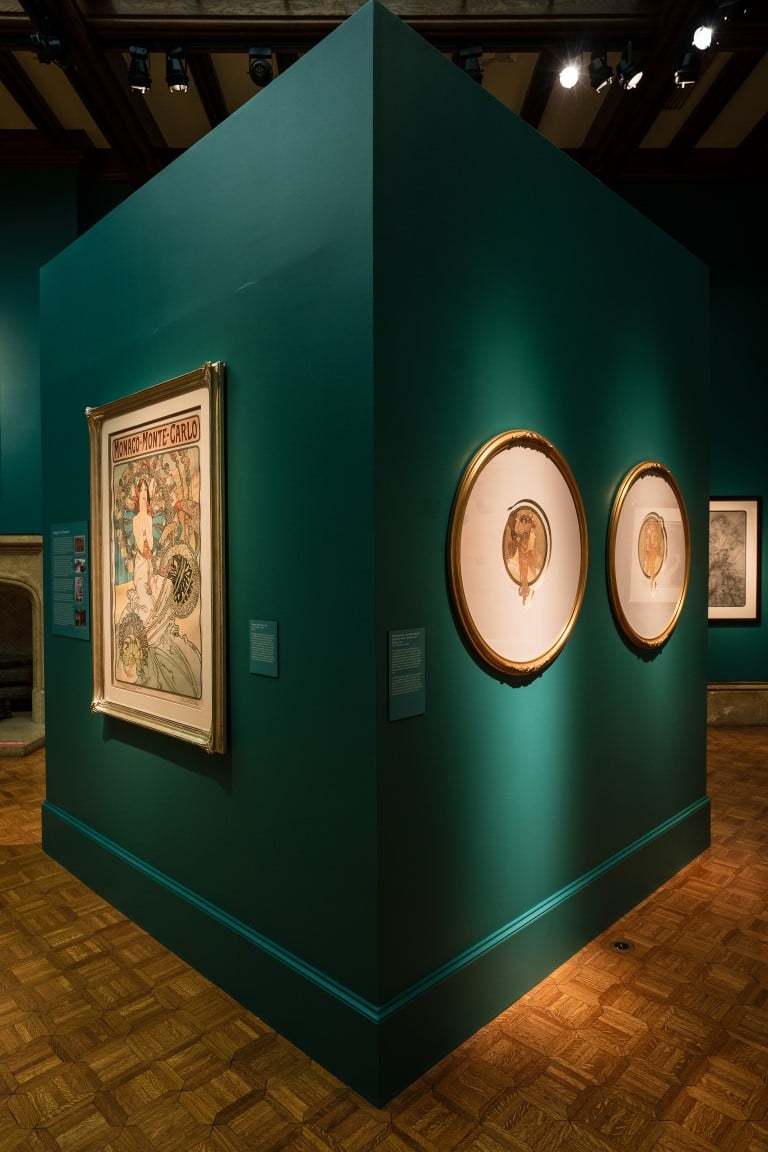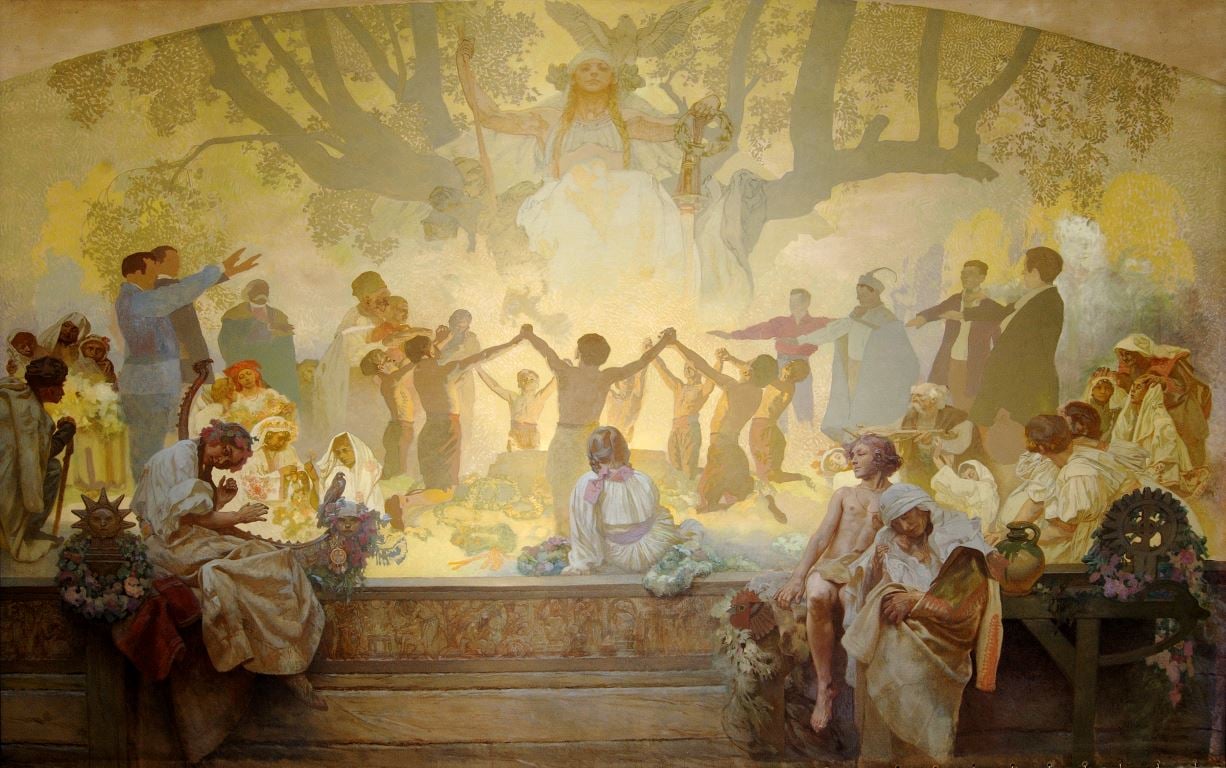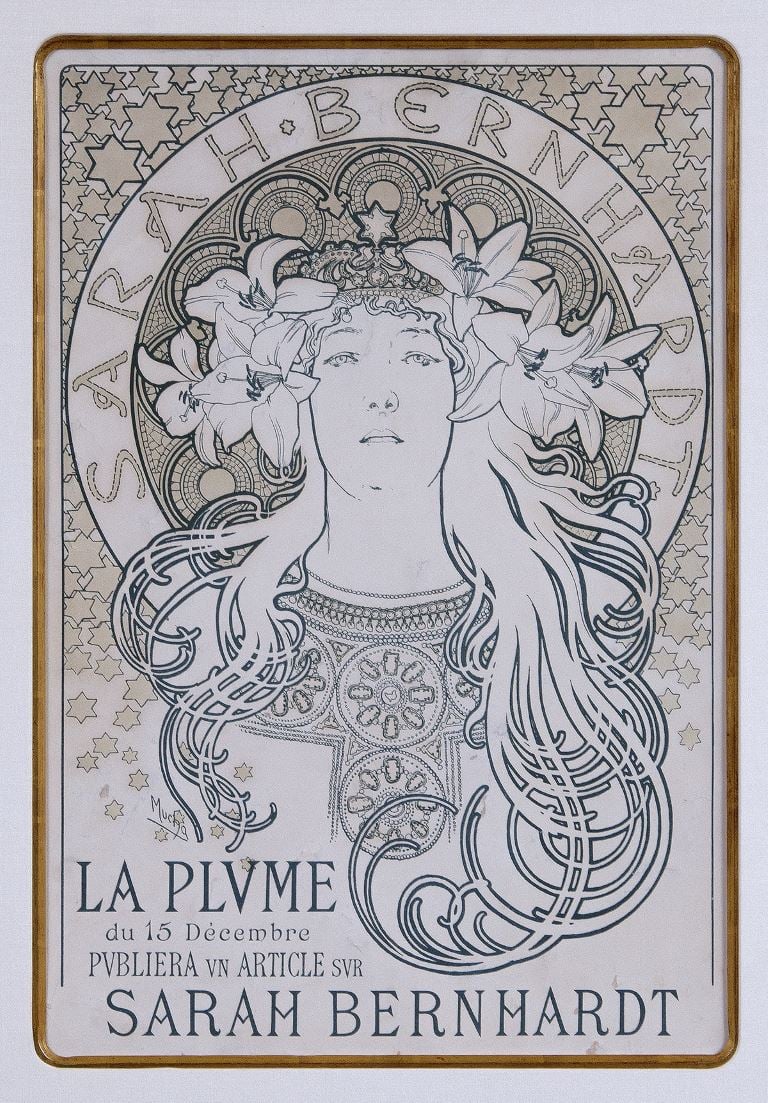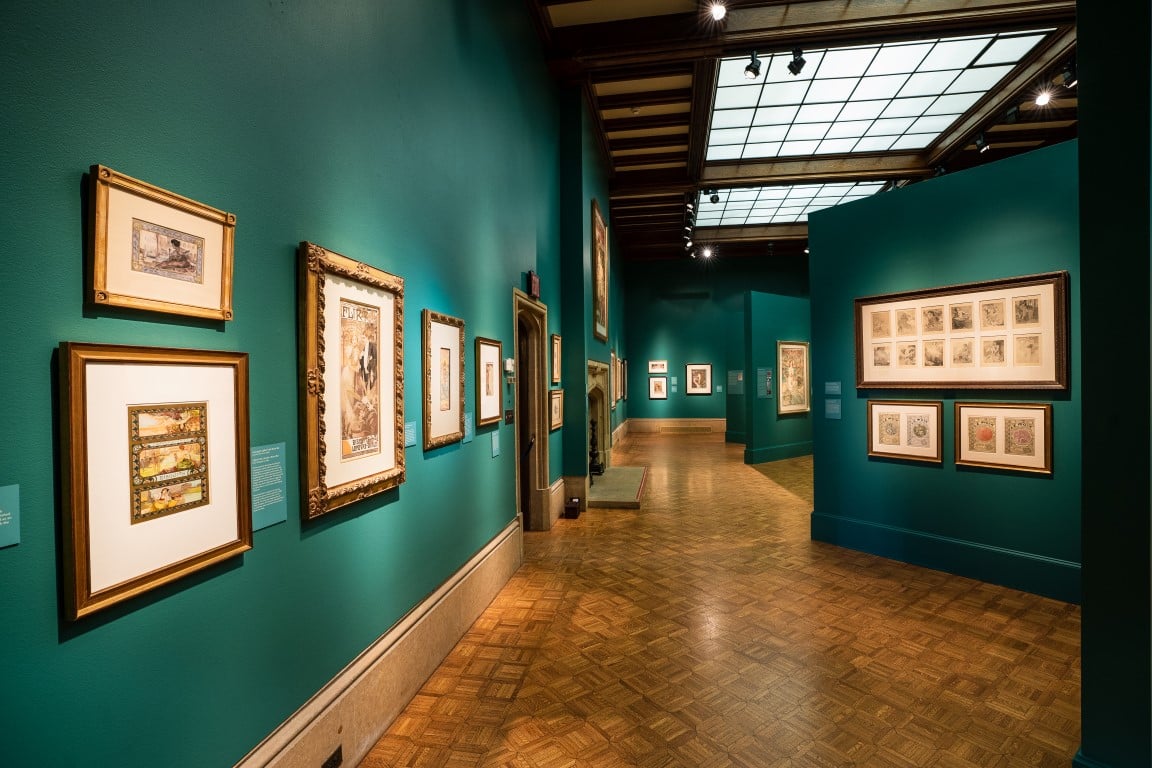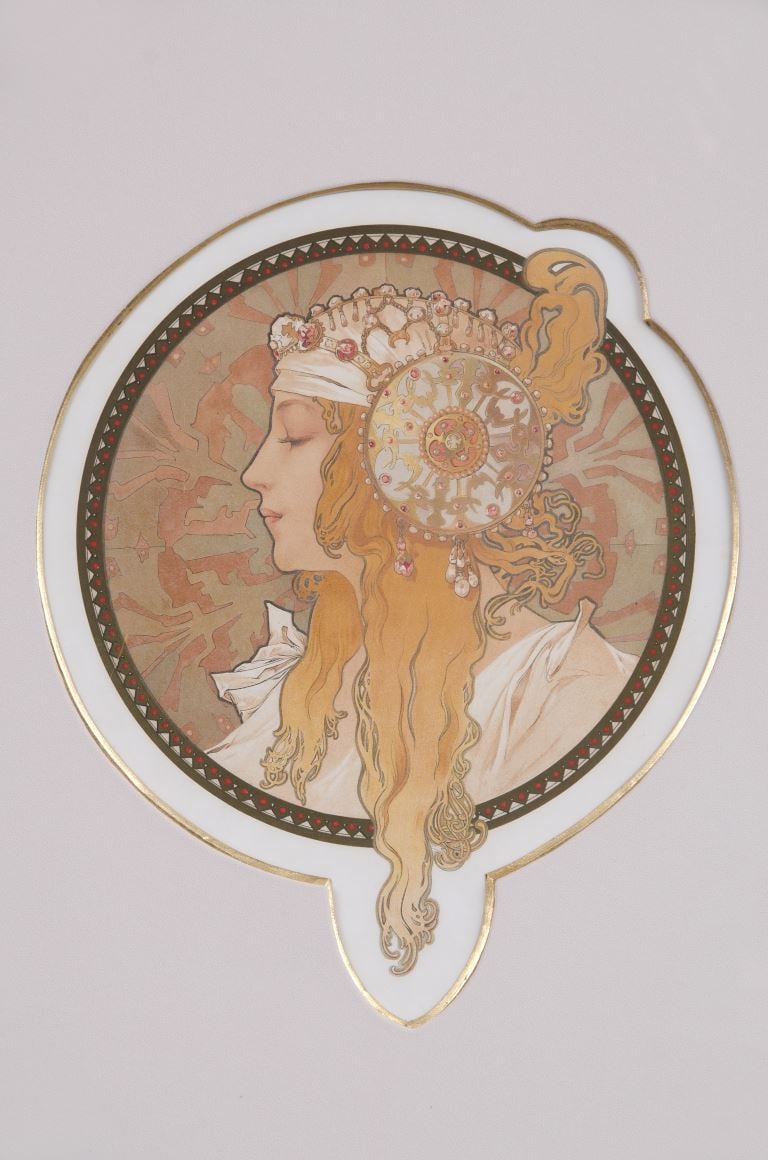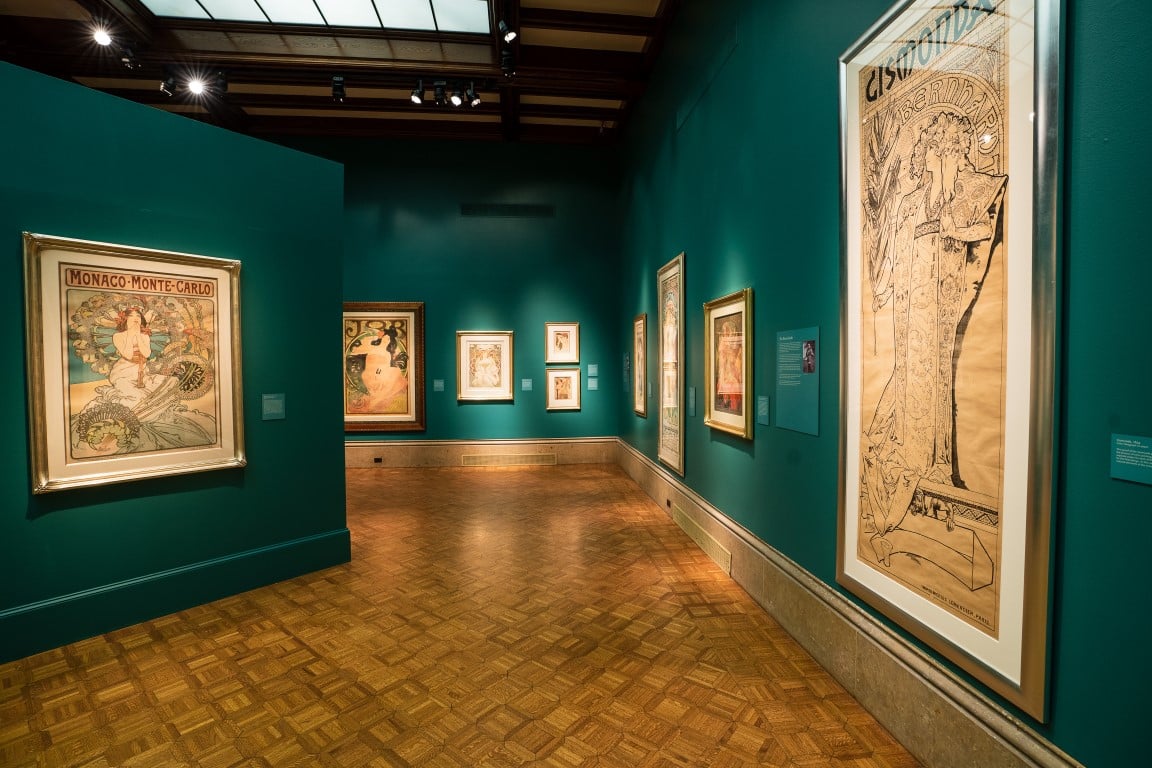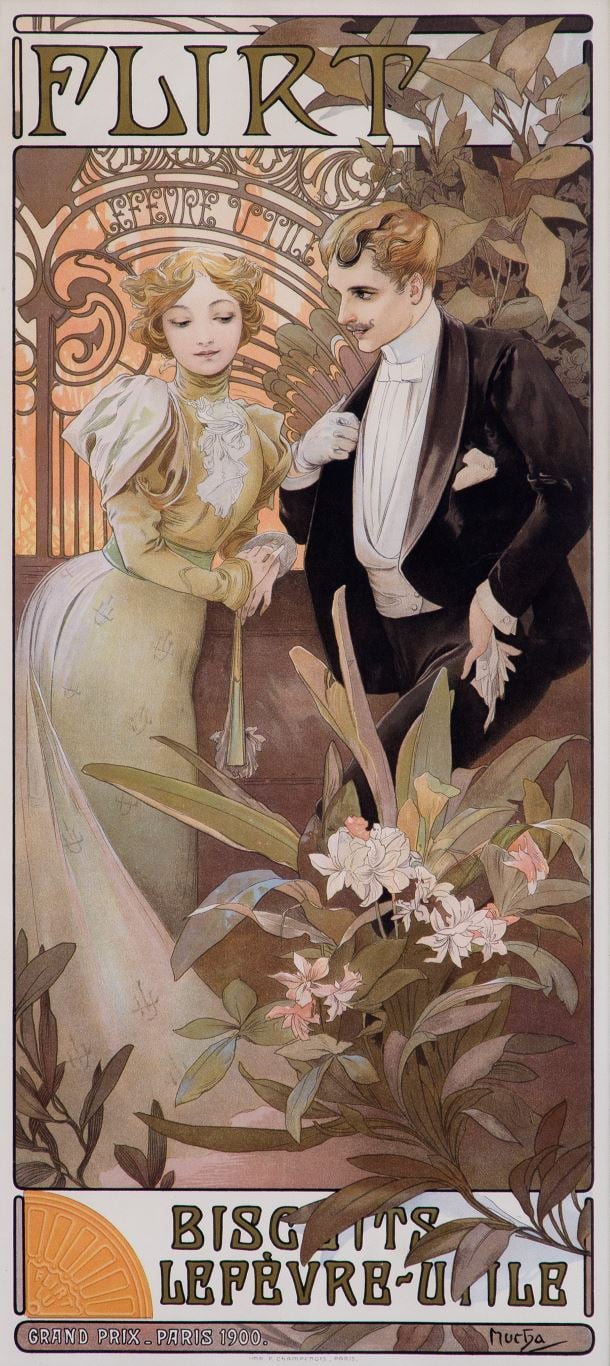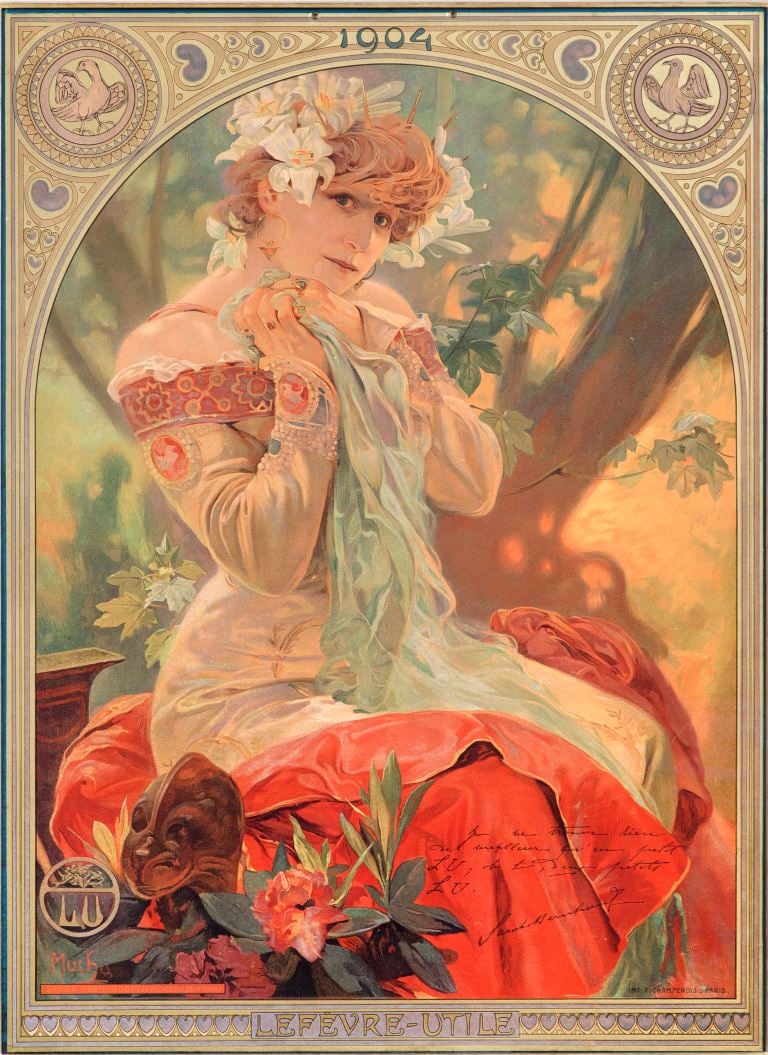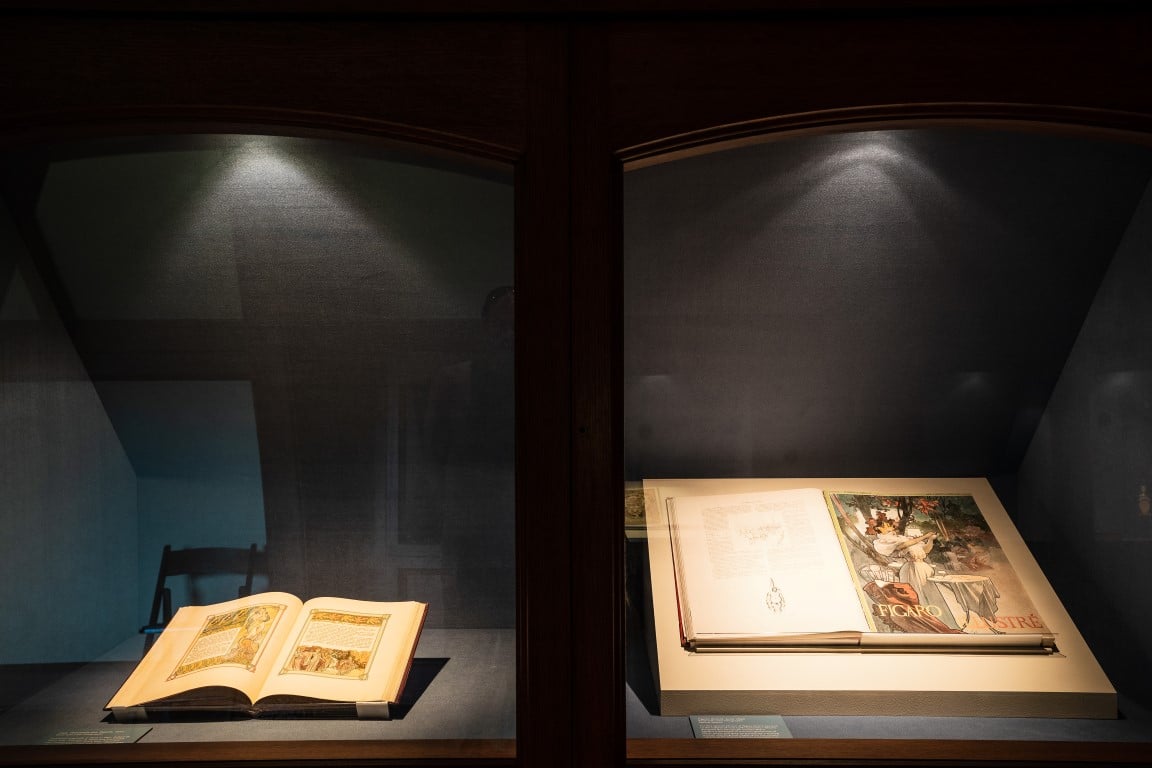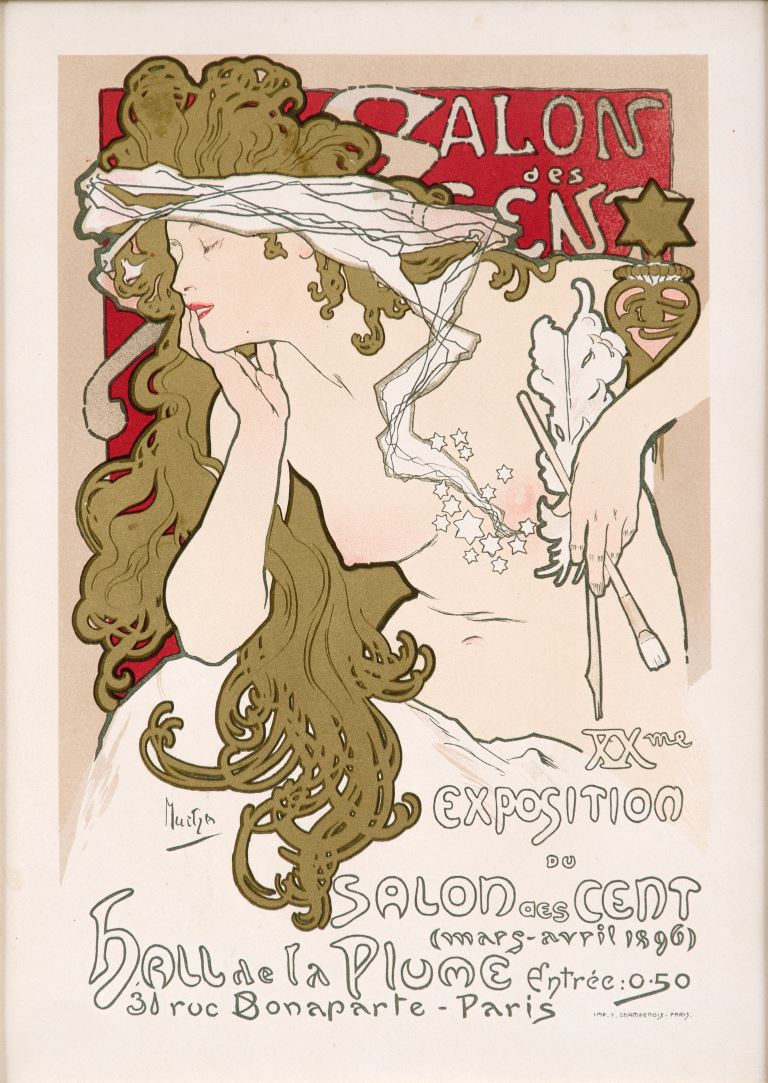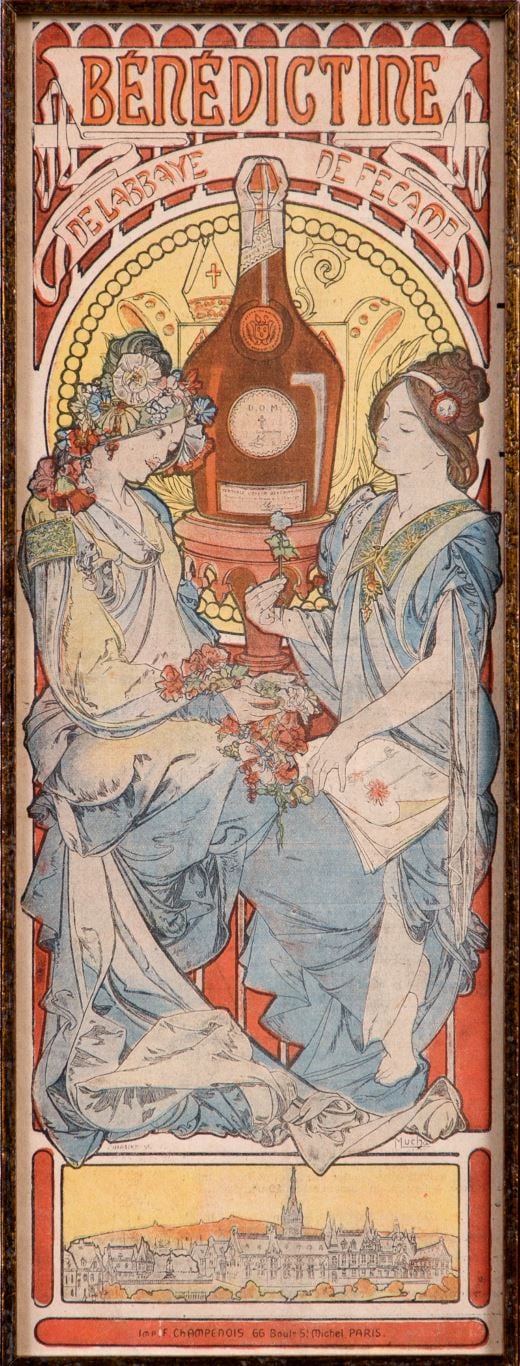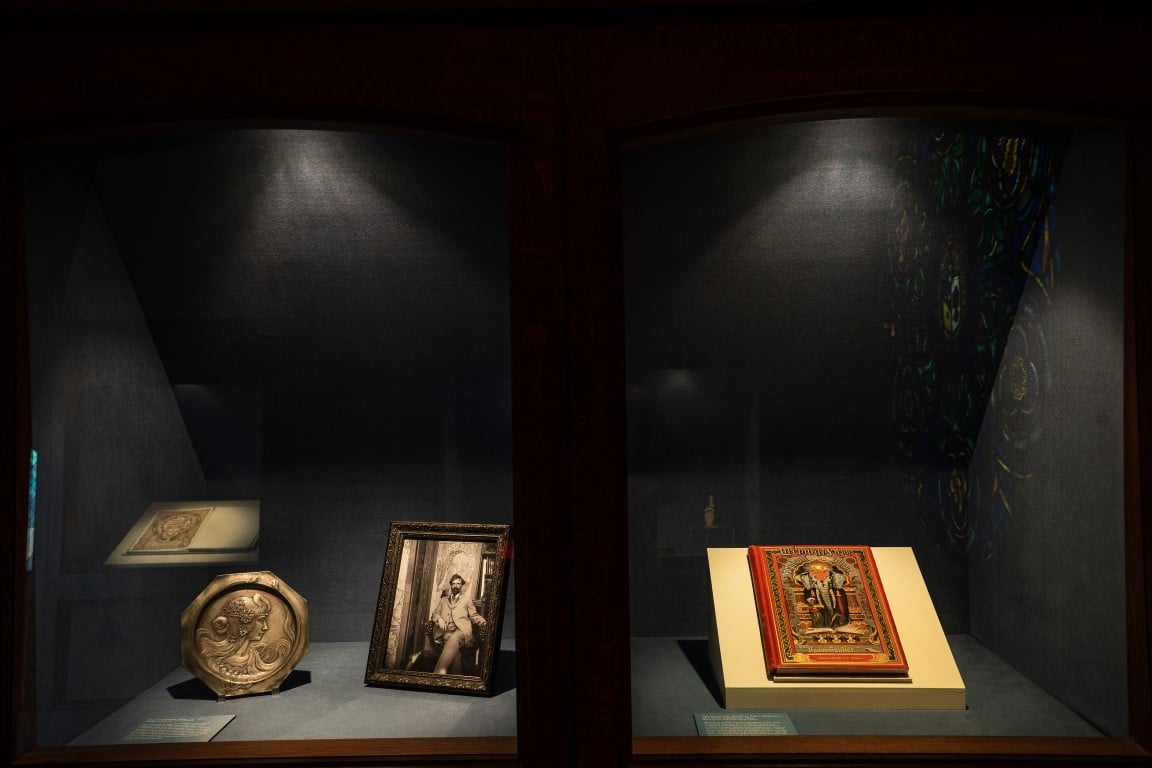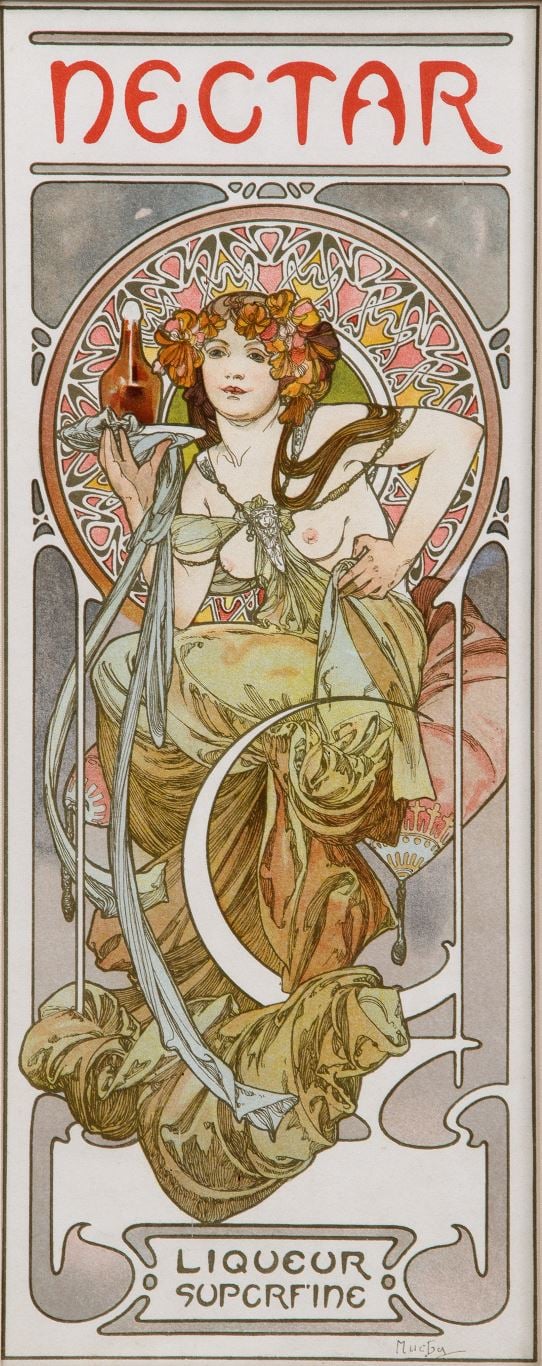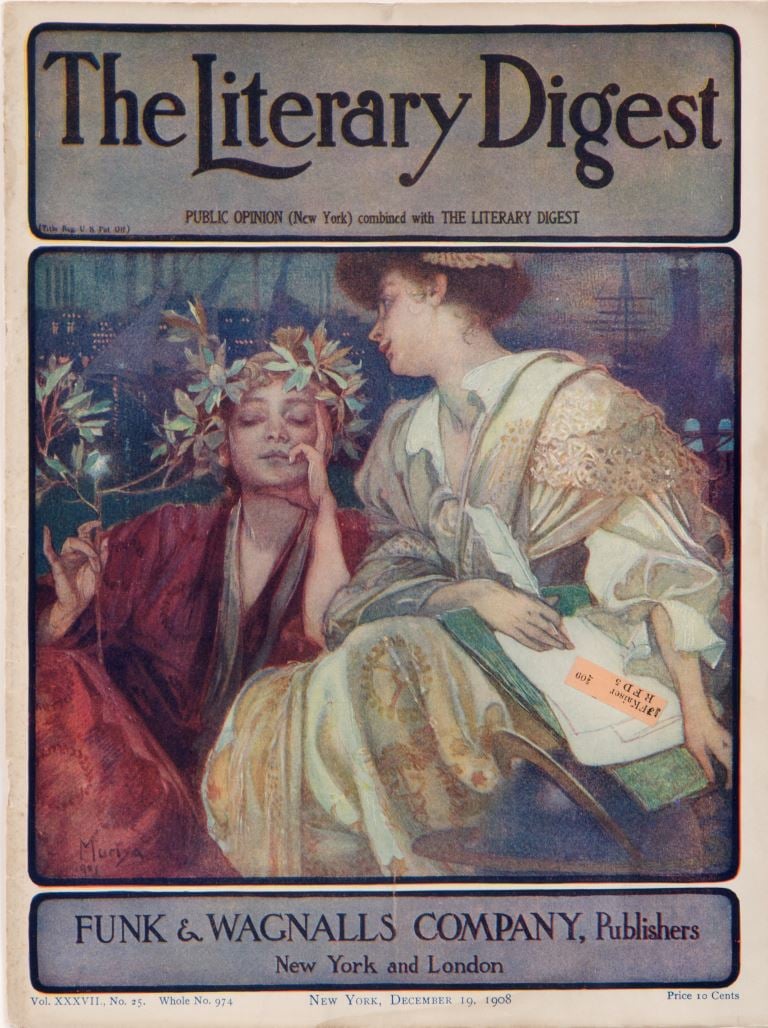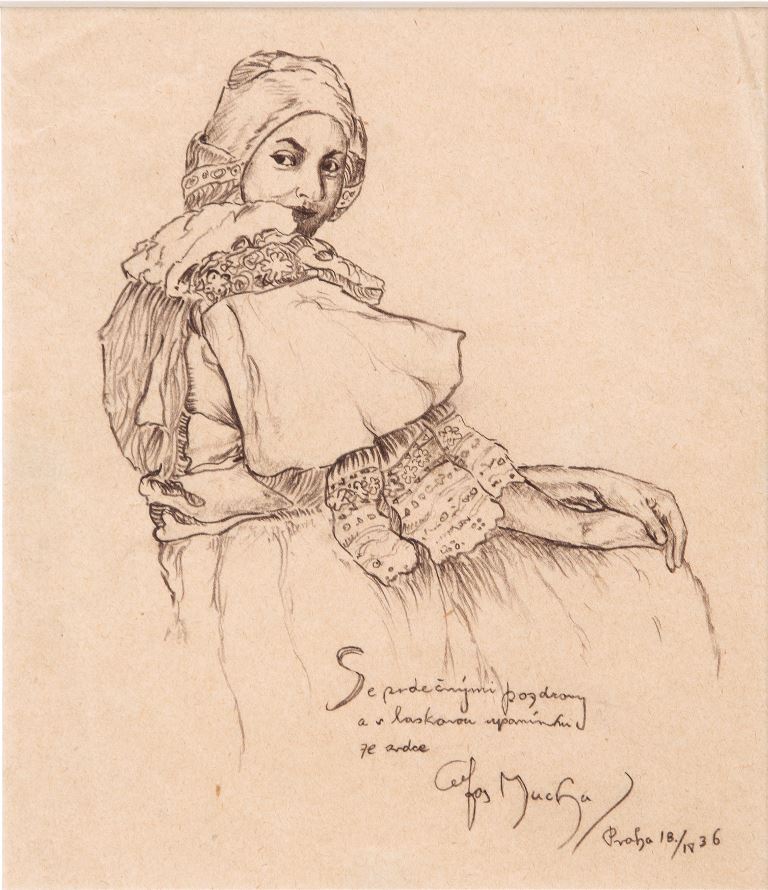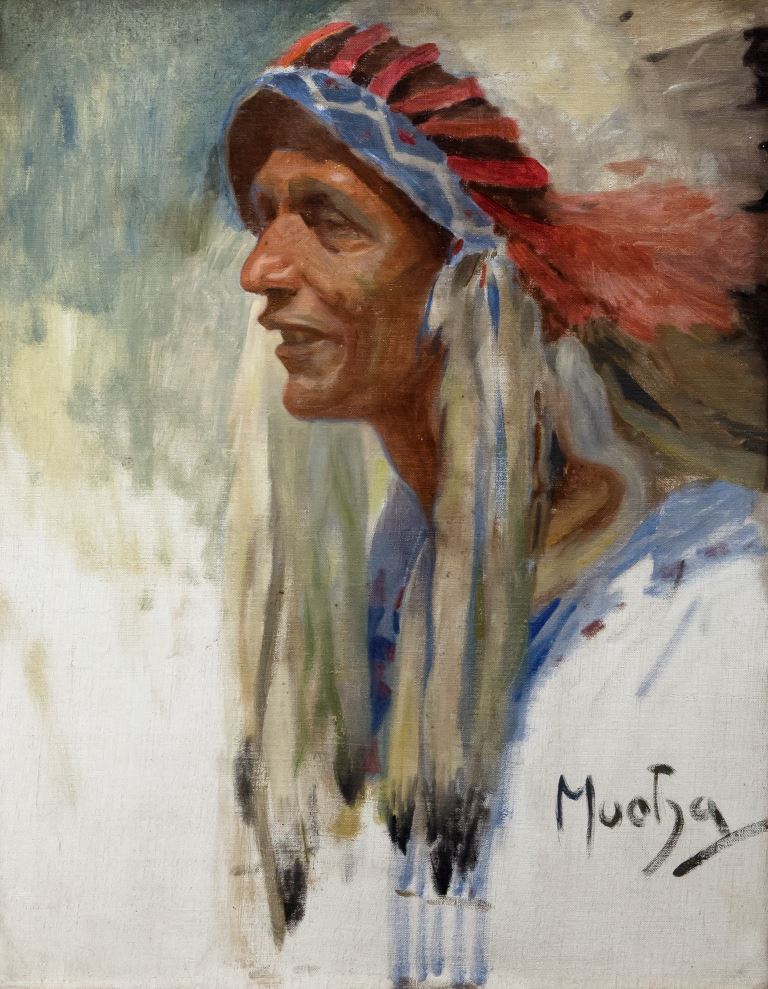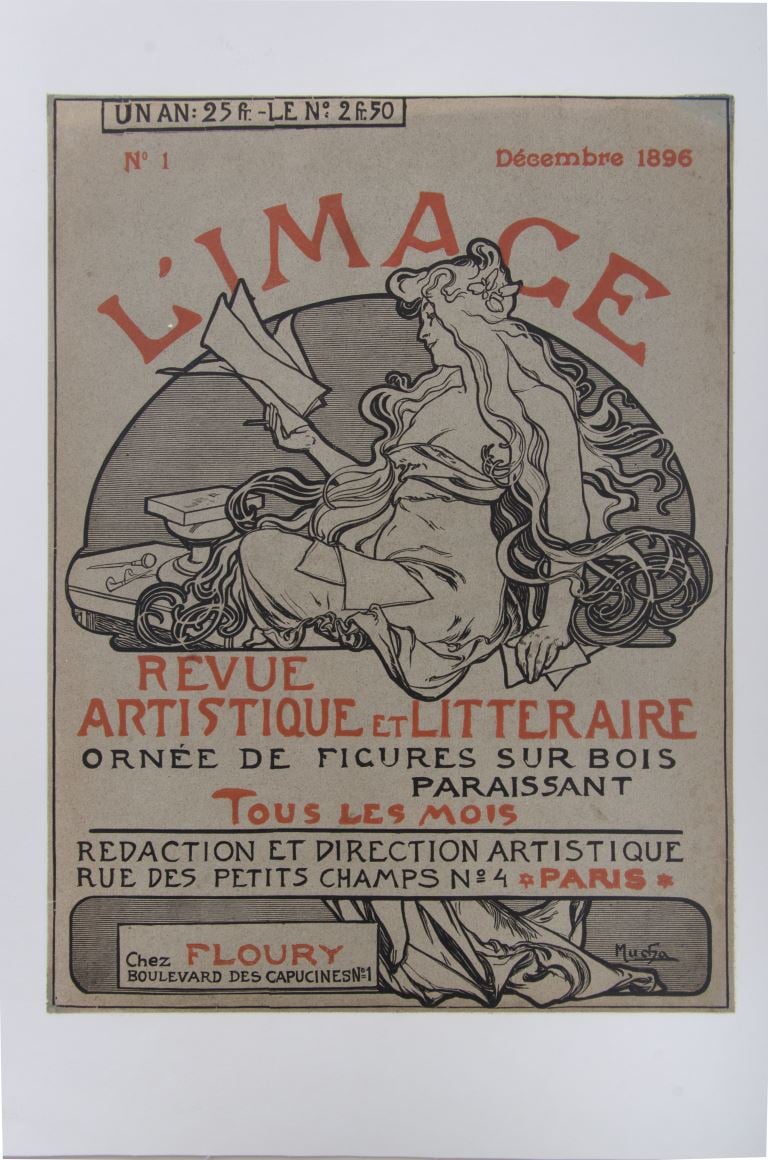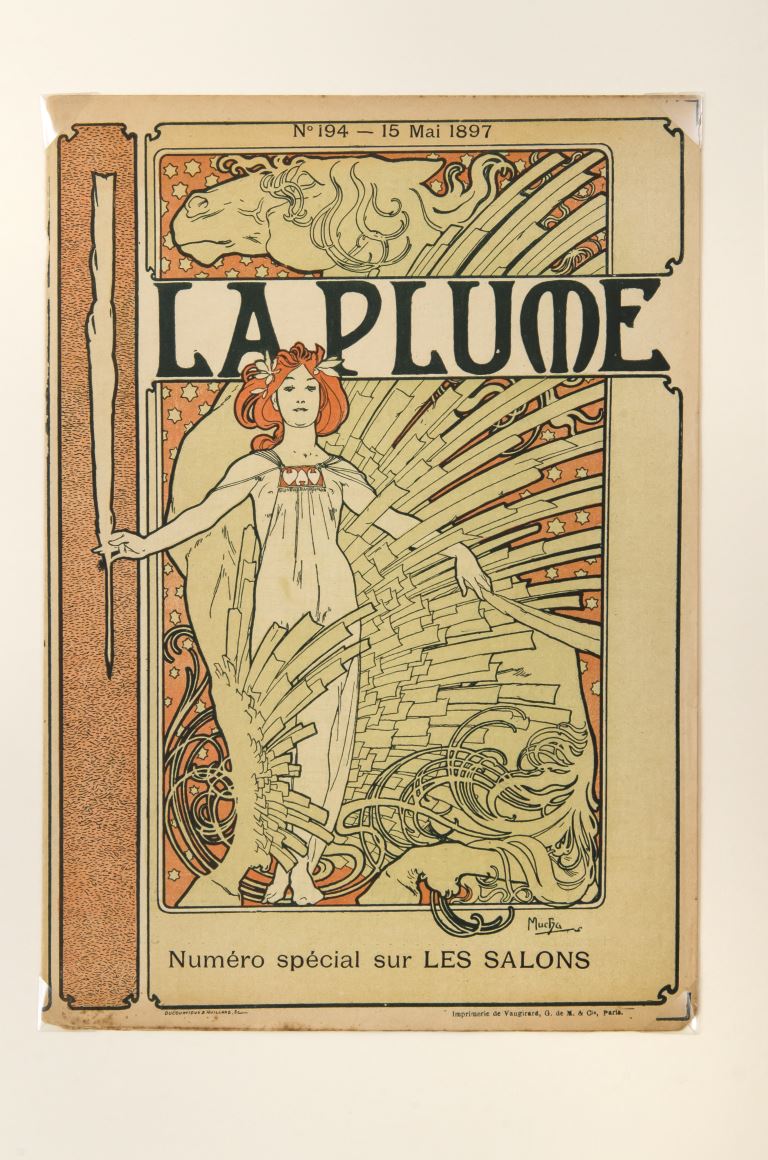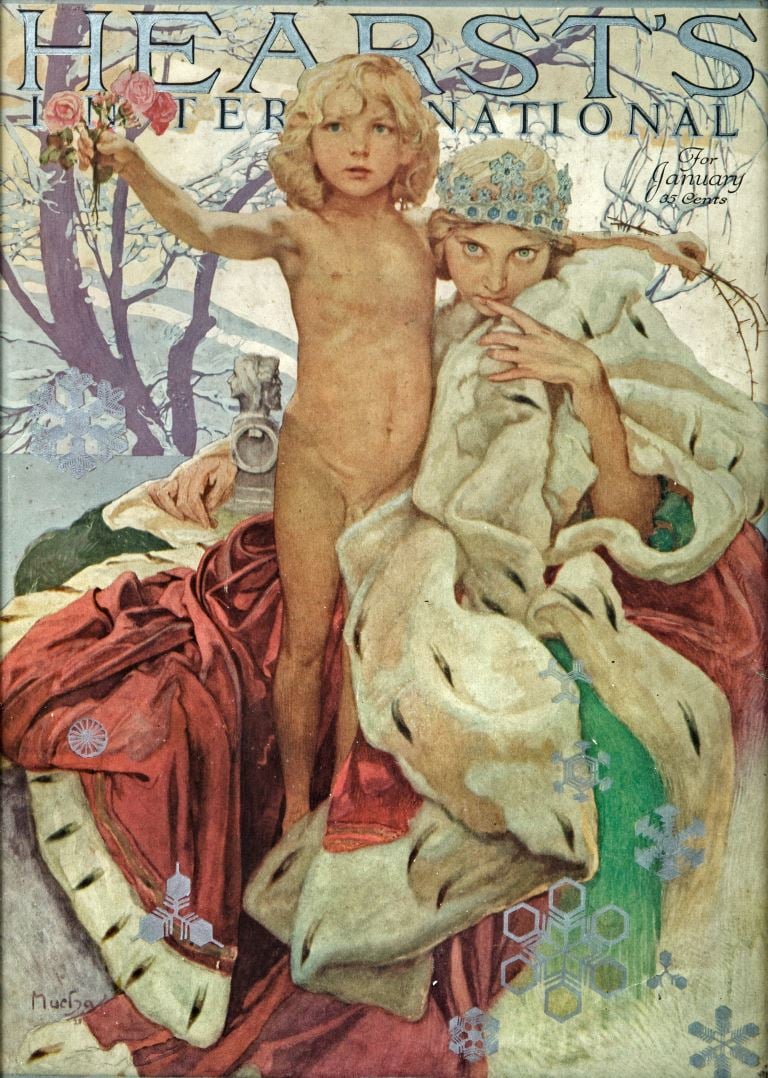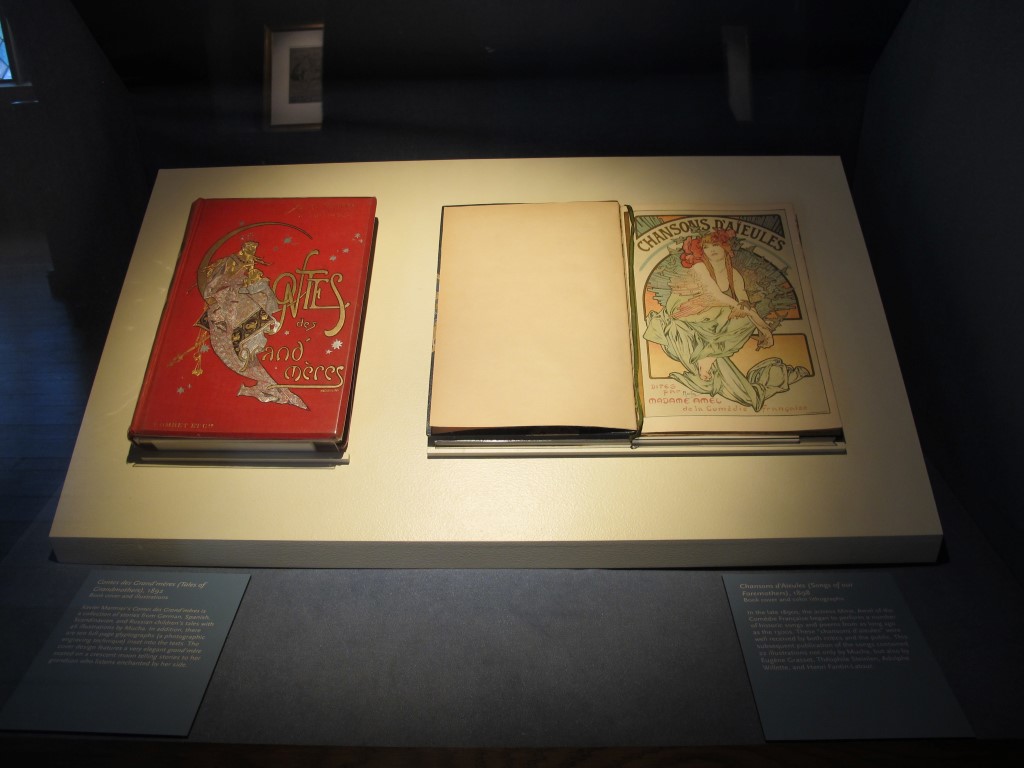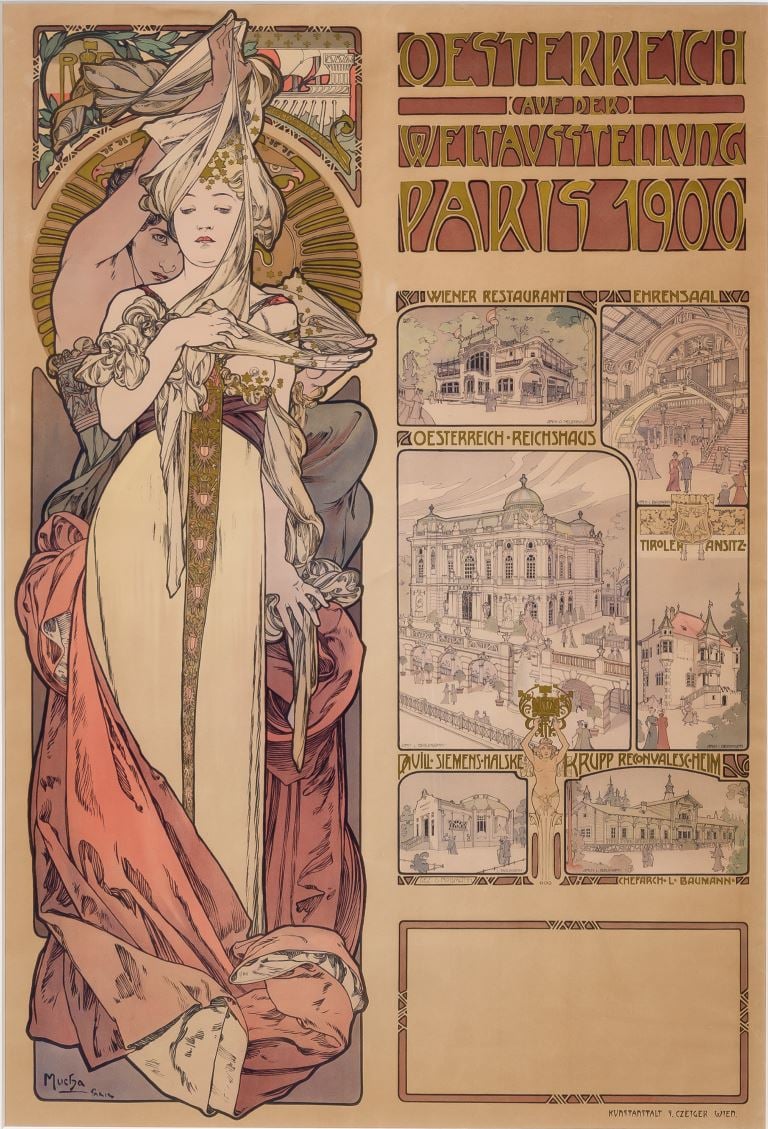Alphonse Mucha
Alphonse Mucha was born on July 24, 1860 in the town of Ivancice in Moravia. He was the second son of Ondrej Mucha, who had six children from two marriages. Ondrej worked as an usher at the Ivancice court house.
From his earliest years, Mucha’s artistic talent was evident. He could draw before he could walk – indeed his mother used to tie a pencil round his neck so that he could draw while crawling about on the floor. Very few of his early drawings survive, though an example of an early design can still be seen in the church in Ivancice where young Alphonse carved a monogram of his initials onto a church pew.
At the age of 19 Mucha was given his first job as a professional artist.
Mucha had spent hardly a year in Vienna when the Ring Theatre, his employers’ main customer, burnt down. Rather than return to his family, Mucha decided to leave his future to fate. He travelled by train through Austria and into Moravia, getting off when his money ran out at Mikulov. Luck was on his side. Portraits Mucha drew in return for board and lodging attracted the attention of Count Khuen Belasi, the local landowner. Mucha was commissioned to paint murals by Count Khuen and his brother Count Egon, who was so impressed by Mucha’s talent that he agreed to become his patron. The Count took advice from a friend and agreed to sponsor Mucha to study at the Academy of Art in Munich for two years. He then agreed that Mucha should continue his studies in Paris.
Mucha arrived in Paris in 1887. Once started, he was soon able to establish himself as a successful and reliable illustrator. But it was on St. Stephen’s Day (December 26) in 1894 that fate singled Mucha out once again. He was doing a favor for a friend, correcting proofs at Lemercier’s printing works, when Sarah Bernhardt, the star of the Parisian stage, called de Brunhoff, the printer’s agent, with an immediate demand for a new poster for her production of Gismonda. All the regular Lemercier artists were on holiday, so de Brunhoff turned to Mucha in desperation. A demand from ‘la divine Sarah’ could not be ignored. Gismonda, the poster which Mucha created, was to revolutionize poster design. The long narrow shape, the subtle pastel colors and the ‘halo’ effect around the subject’s head were to remain features of Mucha’s posters throughout his life. The effect created was astonishing and the poster so popular with the Parisian public that collectors bribed bill stickers to obtain them or simply went out at night and, using razors, cut them down from the hoardings. During the course of the next 10 years, Mucha became one of the most popular and successful of Parisian artists.
In 1899 Mucha accepted a commission from the Austrian Government to design the interior of the Pavilion of Bosnia-Herzegovina, which was to form part of the Paris International Exhibition of 1900. Later he decided that he must leave Paris and seek his fortune in America. Mucha spent the best part of ten years in America, frustrating years nurturing a dream which could only be achieved with substantial sponsorship.
Mucha returned to Bohemia in 1910. He spent a large part of the remainder of his life creating the twenty paintings which make up The Slav Epic. These monumental paintings, some of which measure as much as 6 by 8 metres, celebrate more than a thousand years of Slav history, divided between specifically Czech themes and those of other Slav peoples.
Mucha died in 1939. He is most often remembered for the prominent role he played in shaping the aesthetics of French Art Nouveau at the turn of the 20th century.
